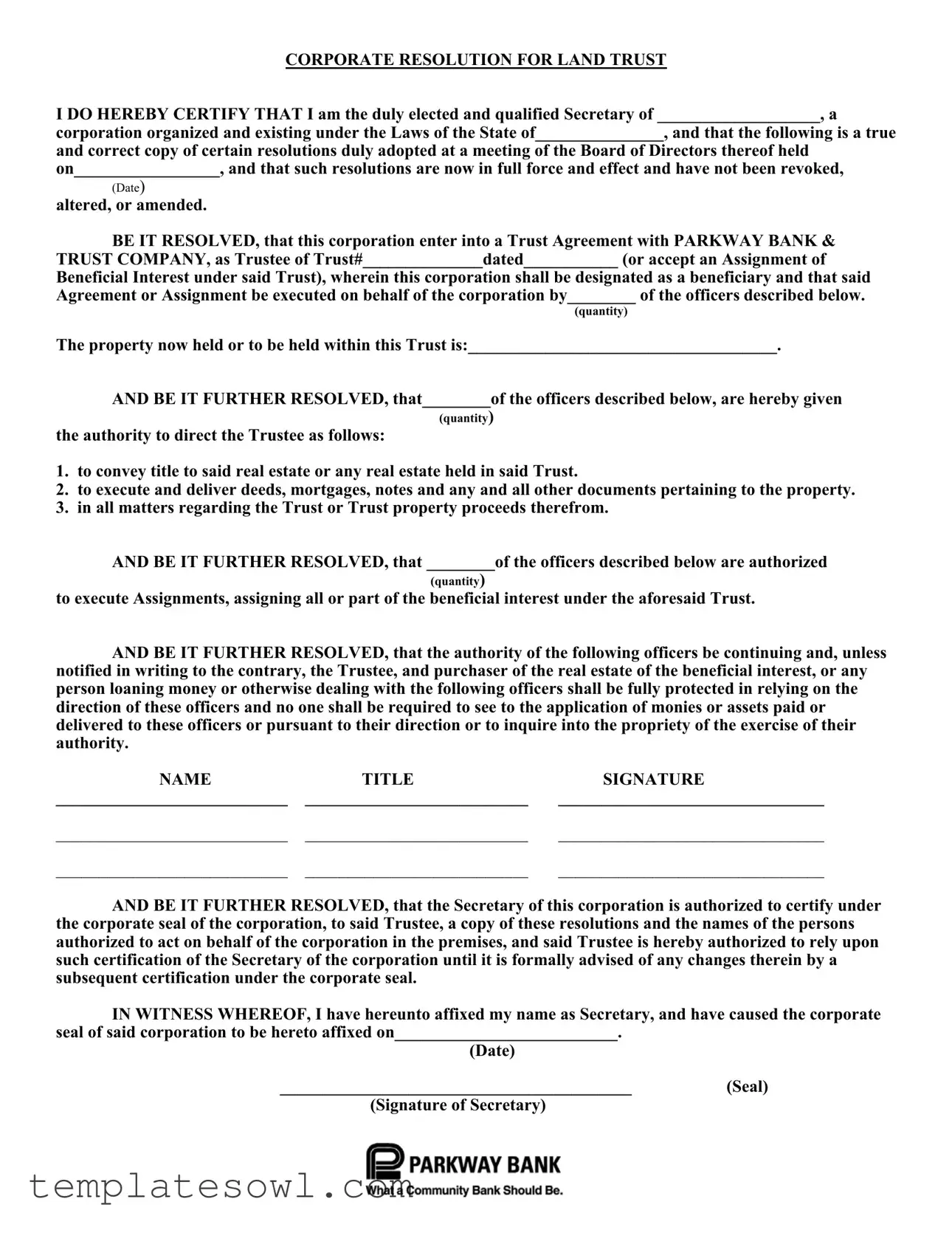CORPORATE RESOLUTION FOR LAND TRUST
I DO HEREBY CERTIFY THAT I am the duly elected and qualified Secretary of ___________________, a
corporation organized and existing under the Laws of the State of_______________, and that the following is a true
and correct copy of certain resolutions duly adopted at a meeting of the Board of Directors thereof held
on_________________, and that such resolutions are now in full force and effect and have not been revoked,
(DATE)
altered, or amended.
BE IT RESOLVED, that this corporation enter into a Trust Agreement with PARKWAY BANK & TRUST COMPANY, as Trustee of Trust#______________dated___________ (or accept an Assignment of
Beneficial Interest under said Trust), wherein this corporation shall be designated as a beneficiary and that said Agreement or Assignment be executed on behalf of the corporation by________ of the officers described below.
(quantity)
The property now held or to be held within this Trust is:____________________________________.
AND BE IT FURTHER RESOLVED, that________of the officers described below, are hereby given
(quantity)
the authority to direct the Trustee as follows:
1.to convey title to said real estate or any real estate held in said Trust.
2.to execute and deliver deeds, mortgages, notes and any and all other documents pertaining to the property.
3.in all matters regarding the Trust or Trust property proceeds therefrom.
AND BE IT FURTHER RESOLVED, that ________of the officers described below are authorized
(quantity)
to execute Assignments, assigning all or part of the beneficial interest under the aforesaid Trust.
AND BE IT FURTHER RESOLVED, that the authority of the following officers be continuing and, unless notified in writing to the contrary, the Trustee, and purchaser of the real estate of the beneficial interest, or any person loaning money or otherwise dealing with the following officers shall be fully protected in relying on the direction of these officers and no one shall be required to see to the application of monies or assets paid or delivered to these officers or pursuant to their direction or to inquire into the propriety of the exercise of their authority.
NAME |
TITLE |
SIGNATURE |
___________________________ |
__________________________ |
_______________________________ |
___________________________ |
__________________________ |
_______________________________ |
___________________________ |
__________________________ |
_______________________________ |
AND BE IT FURTHER RESOLVED, that the Secretary of this corporation is authorized to certify under the corporate seal of the corporation, to said Trustee, a copy of these resolutions and the names of the persons authorized to act on behalf of the corporation in the premises, and said Trustee is hereby authorized to rely upon such certification of the Secretary of the corporation until it is formally advised of any changes therein by a subsequent certification under the corporate seal.
IN WITNESS WHEREOF, I have hereunto affixed my name as Secretary, and have caused the corporate seal of said corporation to be hereto affixed on__________________________.
(Date)
_________________________________________ (Seal)
(Signature of Secretary)

